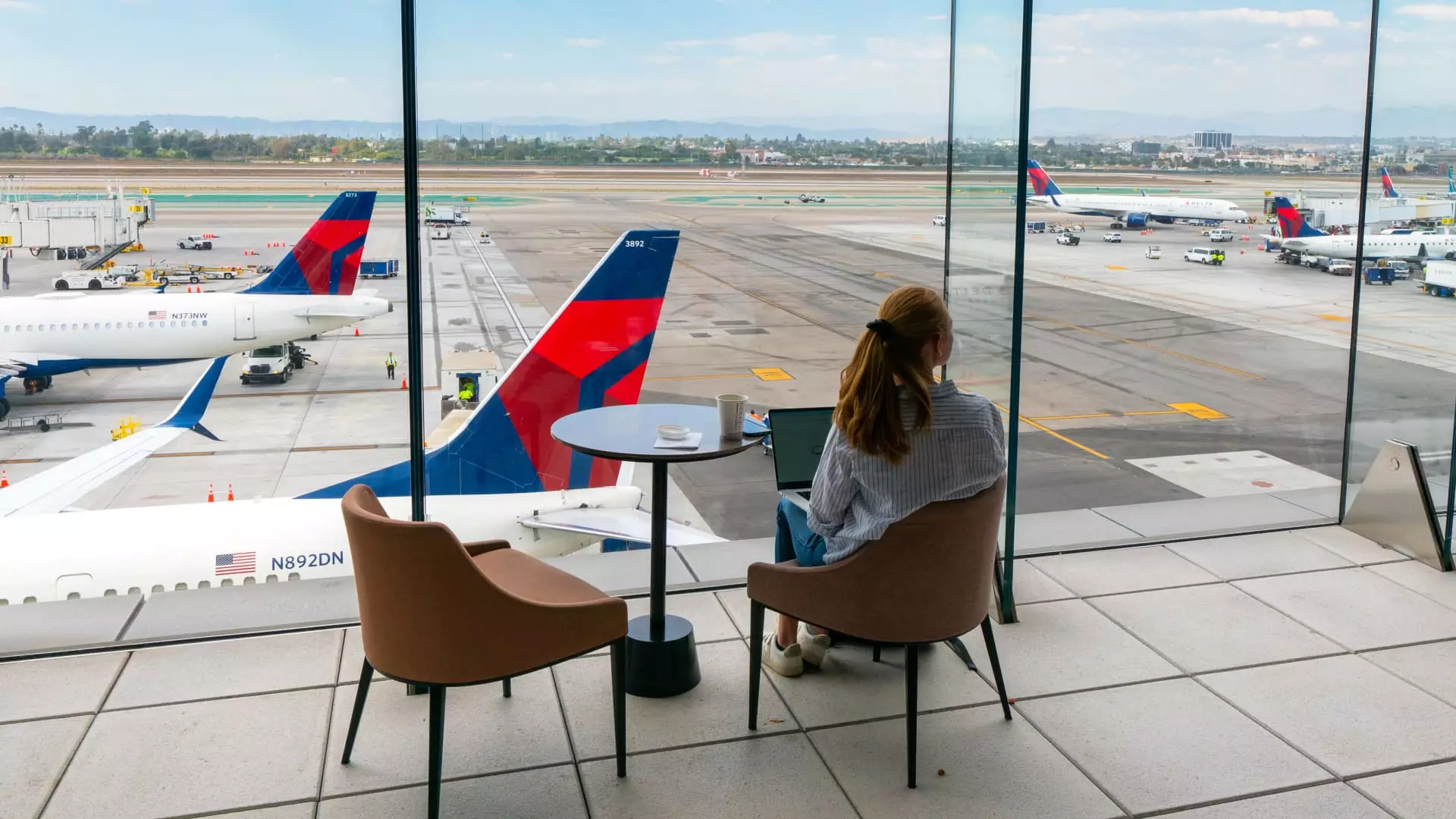In a world increasingly governed by economic uncertainties, airlines stand as forthright barometers of consumer sentiment and overall economic health. Recent declarations from major players like Delta Air Lines and Frontier Airlines reveal a looming cloud of concern over the industry’s future. With both airlines retracting their optimistic 2025 forecasts, we witness a narrative shift from previous exuberance to cautious anticipation as executives voice apprehensions over declining bookings and shifting consumer behaviors. The aviation sector, often touted for its resilience, is contending with multifaceted challenges that demand a more nuanced understanding of the economic landscape.
Warnings from the Cockpit: The CEOs Speak Out
The voices at the helm of Delta and Frontier have issued stark warnings regarding weakened demand, particularly in the wake of former President Donald Trump’s trade policies, escalating layoffs, and a decline in cross-border travel from Canada and other nations. Delta’s CEO, Ed Bastian, recently articulated a sentiment that resonates beyond the confines of the airline industry; he proclaimed, “I think we’re acting as if we’re going to a recession,” echoing a defensive posture that many consumers may be adopting. This revelation starkly contrasts the hopeful outlook that was prevalent at the year’s start, raising questions about the sustainability of the airline industry’s post-pandemic bounce-back.
Consumer sentiment, as highlighted by a University of Michigan survey showing a notable decline, adds another layer of complexity to the situation. Simultaneously, Bank of America’s analysis pointed towards shrinking discretionary spending on non-essential services, such as dining and recreation, which play a critical role in the travel sector’s recovery. This combination of factors places airlines in a precarious position, pushing them to adapt rapidly in response to consumer behaviors that are evolving in real time.
The Dichotomy of Travel: Luxury vs. Budget Airlines
Interestingly, as the commonplace traveler seems to shrink back, airlines’ strategies are taking a pointed turn towards courting wealthier clientele. This is becoming an essential strategy for airlines, which are increasingly banking on affluent leisure travelers to stimulate revenue—a post-pandemic trend that has proven to be its own double-edged sword. The iconic low-cost airline Spirit Airlines cleverly tapped into this dichotomy, marketing its “Big Front Seat” with a quip that softly nudged travelers toward affording comfort over inconvenience. This shift raises concerns about accessibility and equity in travel as airlines focus on an increasingly premium market segment.
Furthermore, the industry is seeing a trend of lavish refurbishment and increased amenities aimed at the affluent. Airlines are heavily investing in more comfortable seating arrangements and premium class cabins, a phenomenon underscored by the rising demand for first-class and business-class seats, which is now outpacing the traditional main cabin options. However, while these investments promise higher margins, they also highlight vulnerabilities in the core consumer market for air travel.
A Global Network: International Routes Under Pressure
Even as airlines struggle with domestic travel hesitancies, pressures are mounting within international routes too. Delta and United Airlines have begun to trim their Canada-U.S. flight schedules, mirroring a troubling trend of dwindling demand for U.S.-bound travel. The latest statistics from the U.S. Commerce Department paint a stark picture: visitor arrivals from non-U.S. citizens plunged nearly 13% compared to pre-pandemic levels. With such drastic declines threatening to widen the travel-deficit gap further, the stakes are high for carriers that rely on transnational tourist traffic for sustaining revenues.
However, the silver lining may be hidden in broader dynamics of supply and demand; a decrease in demand might set the stage for competitive fare pricing in international travel. Industry analysts such as Scott Keyes anticipate a ripe opportunity season for trips to Europe, indicating that this summer could offer more favorable conditions for travelers compared to previous years marked by uncertainty and high prices.
Navigating Uncertainty: The Future of Air Travel
Despite the turbulence, hope remains tethered to consumers’ willingness to splurge on travel. The airline industry’s future remains a balancing act of managing aspirations for luxury while grappling with a cautious marketplace. With forecasts from major airlines now pivoting towards premium options and international travel possibilities, one must consider the broader implications of these strategies—not just for the industry’s financial health, but for the very nature of air travel as a social good.
As the leading airlines position themselves for recovery, it will be crucial to monitor their responses to an evolving economic landscape. The interplay between consumer behavior and corporate strategy will dictate the next phase of recovery in the airline industry, where high stakes and high hopes collide amidst the clouds of uncertainty.


Leave a Reply